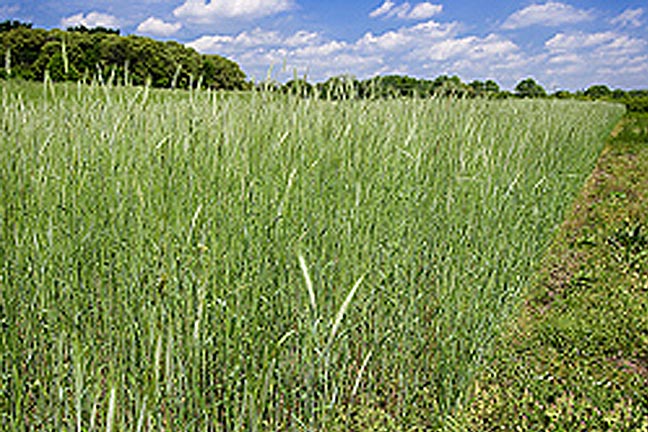
Agricultural News
Cover Crops Beneficial to Soil
Fri, 24 Oct 2014 11:41:16 CDT

Just because the cooler weather is starting to set in does not mean Oklahoma gardeners will become idle.
This is a great time to plant cover crops, also known as green manure crops, said David Hillock, Oklahoma State University Cooperative Extension consumer horticulture specialist.
"Cover or green manure crops are usually grown when the garden soil is idle, but they also can be planted between rows of fruits or vegetables to serve as a living mulch," Hillock said. "Sometimes called 'catch crops,' their deep roots absorb nutrients from the soil that could otherwise leach away, or may be unavailable to garden crops with shorter roots. When these cover crops are tilled under, they decompose and release those 'caught' nutrients back into the soil."
Some cover crops, those from the legume family, can trap and transform atmospheric nitrogen in their roots. This nitrogen serves as a great fertilizer source for future crops.
While cover crops in the grass or grain family do not actively fix nitrogen, they do create a thick mulch, produce a large amount of organic matter to be tilled under and have deep roots that loosen compacted soils, thereby improving drainage and aeration.
Hillock said cover crops are divided into two categories, including warm-season and cool-season crops, based on the optimum times to plant and grow.
"During this time of year we're looking at cool-season crops because they will survive through the winter. Now through the end of October is the optimal planting time," he said. "They need to be planted early enough so their roots develop before winter but late enough so they don't complete their growing cycle before the weather gets really cold."
Warm-season types will not tolerate freezing temperatures and should be planted after all danger of frost. Most take six to eight weeks, or even longer, to grow large enough to turn under. An exception is buckwheat, which may need only four weeks under good growing conditions.
Because they are used in rotation with other crops in the same garden location, another benefit is cover crops can help suppress harmful soil nematodes. Nematodes, which are parasites, tend to be host specific, attacking just one crop or crop family. They do not like the taste of other plant families and their numbers will decline without the preferred food source.
Some cover crops, just like any other crop, may attract insects that could harm other garden crops. Hillock said gardeners should watch for pest insects in cover crops and other crops and be ready to use various integrated pest management or best management methods while the pest problem is in its early stages.
"Legumes need certain strains of bacteria to enable them to convert nitrogen gas from the air into a form plants can use. The bacteria needed by various kinds of legumes may or may not already be in your garden soil," he said. "To be certain, legume seeds should be coated with an inoculant powder that contains living Rhizobium spores. Commercial inoculant is usually inexpensive and widely available. Some legume seeds are sold pretreated with the proper bacteria."
Here are some guidelines for planting cover crops:
-- Prepare the soil as you would if planting vegetables. Legumes will produce the nitrogen they need, but non-legume crops will need to have nitrogen fertilizer (1 to 1-1/2 pounds of actual nitrogen per 1,000 square feet) added to the soil to produce maximum yields of organic matter.
-- Inoculate legume seeds by moistening them, draining the excess water, adding the inoculant powder, and mixing well.
-- Broadcast the seed evenly.
-- Cover seed with a thin layer of soil by raking it in or going over the area with a rototiller set very shallow.
-- Keep the area moist until seedlings emerge. Light watering may be needed twice a day, or more, in hot weather.
-- Mow and harvest cover crops before they flower and produce seeds, and till under at least 10 days to 2 weeks before planting garden crops.
For more information about cover crops, contact your local OSU Cooperative Extension office, or check out OSU fact sheet HLA-6436 by clicking here.
WebReadyTM Powered by WireReady® NSI
Top Agricultural News
More Headlines...



















